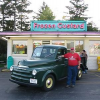-
Posts
9,379 -
Joined
-
Last visited
-
Days Won
86

Merle Coggins replied to Iowaboy's topic in Mopar Flathead Truck Forum

Merle Coggins replied to blue71c's topic in P15-D24 Forum

Merle Coggins replied to JPP's topic in Mopar Flathead Truck Forum

Merle Coggins replied to JPP's topic in Mopar Flathead Truck Forum

Merle Coggins replied to Don Coatney's topic in Off Topic (OT)

Merle Coggins replied to Batterzazu's topic in Mopar Flathead Truck Forum

Merle Coggins replied to Marc 1952 B3B's topic in Mopar Flathead Truck Forum

Merle Coggins replied to casper50's topic in Off Topic (OT)

Merle Coggins replied to Marc 1952 B3B's topic in Mopar Flathead Truck Forum
We have placed cookies on your device to help make this website better. You can adjust your cookie settings, otherwise we'll assume you're okay to continue.

